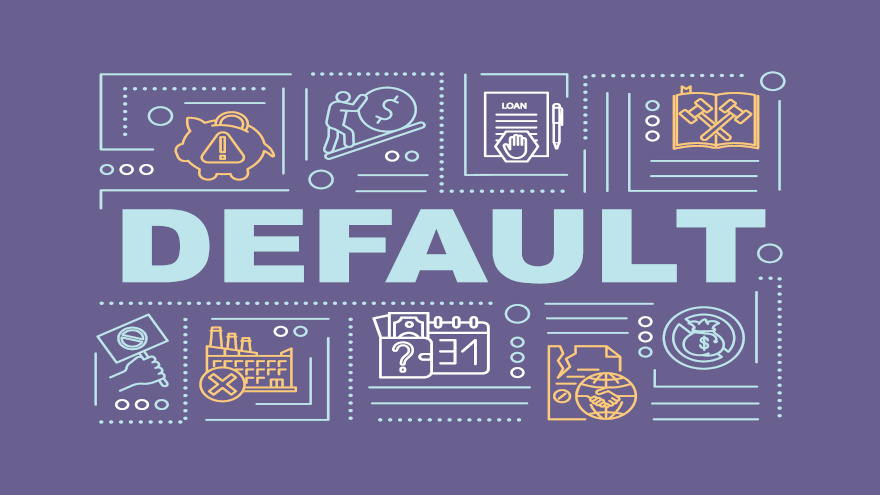Auto defaults drop to 10-year low even as jobless claims approach 39M

Image by bsd / Shutterstock.com
By subscribing, you agree to receive communications from Auto Remarketing and our partners in accordance with our Privacy Policy. We may share your information with select partners and sponsors who may contact you about their products and services. You may unsubscribe at any time.
NEW YORK and WASHINGTON, D.C. –
For the second month in a row, the auto-finance portion of the S&P/Experian Consumer Credit Default Indices for April dropped to the lowest level in 10 years, even as the U.S. Department of Labor said another 2,438,000 workers made initial claims for unemployment benefits last week, pushing the nine-week total to nearly 39 million because of the coronavirus pandemic.
S&P Dow Jones Indices and Experian released their data through April on Tuesday and indicated the auto-default rate dropped 15 basis points to 0.66%. The rate actually has declined each month so far this year.
However, the jobless claims certainly could be an ingredient to push the default rate in the opposite direction. For perspective, information from S&P Dow Jones Indices and Experian from March 2010 showed the auto default rate stood at 2.35% as the U.S. continued to recover from the Great Recession, which federal officials pegged as happening from during the 18-month stretch from December 2007 to June 2009.
During the Great Recession, the unemployment rate peaked at 10.1% in October 2009, according to a report from the Federal Reserve Bank of Cleveland. On Thursday, the Labor Department said the advance seasonally adjusted insured unemployment rate came in at 17.2% for the week ending May 9, an increase of 1.7 percentage points from the previous week’s revised rate.
“Available economic data for the current quarter show a sharp drop in output and an equally sharp rise in unemployment. By these measures and many others, the scope and speed of this downturn are without modern precedent and are significantly worse than any recession since World War II,” Federal Reserve chair Jerome Powell said in prepared remarks during a hearing hosted on Tuesday by the U.S. Senate Banking Committee.
“This precipitous drop in economic activity has caused a level of pain that is hard to capture in words, as lives are upended amid great uncertainty about the future. In addition to the economic disruptions, the virus has created tremendous strains in some essential financial markets and impaired the flow of credit in the economy,” Powell continued.
Subscribe to Auto Remarketing to stay informed and stay ahead.
By subscribing, you agree to receive communications from Auto Remarketing and our partners in accordance with our Privacy Policy. We may share your information with select partners and sponsors who may contact you about their products and services. You may unsubscribe at any time.
Should unemployment push defaults higher, the rises would primarily be connected to lower readings seen in April.
S&P Dow Jones Indices and Experian reported that the composite rate — which represent a comprehensive measure of changes in consumer credit defaults — dipped 9 basis points lower to 0.90%. With the exception of January and February when the composite rate stood at 1.02%, the reading has remained below 1.00% each month since March 2015.
Back in March 2010, the composite rate stood at 4.10%
Turning back to April data, analysts also mentioned the first mortgage default rate fell 11 basis points to 0.66%, while the bank card default rate rose 29 basis points to 4.23%.
Looking at the latest information from the five largest U.S. cities, S&P Dow Jones Indices and Experian determined a trio posted decreases in April.
Chicago produced the largest decrease, dropping 15 basis points to 1.06%. Dallas fell 13 basis points to 0.88%, while New York dipped 4 basis points to 0.95%.
Miami’s rate increased 11 basis points to 1.54% while Los Angeles’ reading ticked up 3 basis points to 0.74%.
Jointly developed by S&P Indices and Experian, analysts noted the S&P/Experian Consumer Credit Default Indices are published monthly with the intent to accurately track the default experience of consumer balances in four key loan categories: auto, bankcard, first mortgage lien and second mortgage lien.
The indices are calculated based on data extracted from Experian’s consumer credit database. This database is populated with individual consumer loan and payment data submitted by lenders to Experian every month.
Experian’s base of data contributors includes leading banks and mortgage companies and covers approximately $11 trillion in outstanding loans sourced from 11,500 lenders.
Secretary of the Treasury Steven Mnuchin, who also appeared during Tuesday’s Senate Banking Committee hearing, tried to remain upbeat about the U.S. economy and its future.
“We are sympathetic to hardworking Americans and businesses enduring tremendous challenges due to the COVID-19 pandemic,” Mnuchin said in his prepared remarks. “We have had to take unprecedented steps to shut down significant parts of the economy in the interest of public health. As a result, in the second quarter of this year, we are continuing to see large unemployment and other negative indicators. It is important to realize that the large numbers represent real people. This is why it is so important to begin bringing people back to work in a safe way.
“As we listen to medical experts, we are optimistic about the progress being made on vaccines, antiviral therapies and testing,” he continued. “Working closely with governors, we are beginning to open the economy in a way that minimizes risks to workers and customers. We expect economic conditions to improve in the third and fourth quarters.”


